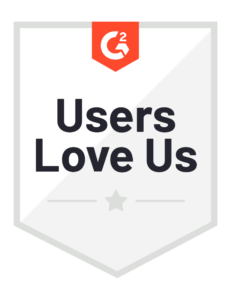Optimize Task Management to Improve Collaboration Among The Accounting Team
Blog post
Share
Many accountants could use a little encouragement when the deadlines for annual account reconciliations and period-ends approach.
Because it isn’t only in the busy periods that visibility and division of responsibilities in the accounting team are put to the test. Who hasn’t felt the stress of being unable to complete work because a colleague hasn’t completed the preceding tasks? Or from the challenges that arise when a key employee falls ill, and no one has sufficient background knowledge or access to the relevant person’s routines and tasks?

Fortunately, you can take a few simple steps to improve task management and set up your team for success.
CLEARLY DEFINE THE DIVISION OF ROLES AND RESPONSIBILITIES
Imagine a soccer team where every player is a striker. They could score many goals, but that won’t win any games. This is also the case for accounting teams: everyone doing the same tasks won’t lead to success. Nevertheless, there are still many businesses out there that do not have a clear division of roles in the department.
The key to a robust task management workflow within the accounting team is each employee knowing their and others’ roles and how they interact. Additionally, sometimes there can be uncertainty around what tasks belong to the team and what tasks belong to individuals. It must be clear to the employees what applies and when.
An accounting team can live with unclear or outdated guidelines when everything goes as it should. Still, in hectic times, unforeseen complications can adversely affect the financial close process. A team member may fall ill; some may need to catch up on their deliverables, while others may have time to spare without being able to start on their next task.
Accounting teams should therefore ensure that the employees not only know their responsibilities but also how to deal with any “what-if” scenarios that may occur. What should be done if an employee does not deliver by the deadline, or what should the team do if the figures from one of the subsidiaries are late?
STANDARDIZED TASK MANAGEMENT WORKFLOWS MAKE THE TEAM LESS VULNERABLE
When the employees know their role and that of others, the next step will be to create a clear description of all tasks within the financial close workflow. In a well-integrated team, the employees can understand how their coworkers carry out their tasks based solely on familiarity. However, if a temporary worker or a new employee is brought in, that situation can quickly change.
With a clear task management workflow in place, you will find that the team becomes less vulnerable to changes in staffing, such as during the holiday period or times of heavy turnover. New employees will probably always need guidance, but with clear process documentation, getting up to speed will take less time –without requiring extra effort from an already busy team.
There are several other advantages to having documented task management and process descriptions. Employees gain much greater flexibility in where they complete their work since it makes little difference whether they are physically in the office or working remotely. This is also particularly useful in a tight labor market, as it makes hiring remote workers possible and plausible.

DIVIDE COMPLEX PROCESSES INTO A STRAIGHTFORWARD WORKFLOW
The third step for better interaction in an accounting team is to break up complex processes into several task management workflows.
Month-ends and year-ends are challenging because they involve several employees carrying out tasks before a given process can be considered complete, such as transaction matching or account reconciliations. The team can experience more visibility and control in everyday processes by dividing the tasks into main and sub-tasks. Each employee can monitor the status of their tasks themselves and gain insight into the average workdays of their colleagues.
If you do not utilize a digital task management system today, you should consider acquiring one. Not only will it make the planning of period-ends and year-ends much more efficient, but it will also help employees to establish themselves quickly and without starting from scratch before each period-end.
TREAT THE CAUSE, NOT THE SYMPTOMS
Although implementing a task management workflow solution can support the accounting team in their day-to-day operations, it does not necessarily solve the root cause of the challenges that necessitated it in the first place. In most cases, employees are so burdened with tasks that they do not have the time or opportunity to gain visibility and control over the financial close process. The consequence can be that employees experience a lot of stress, while at the same time the risk of misreporting increases.
A good place to start is to automate the most time-consuming tasks at the end of the period. It will not only help the employees to take their time back, but it can also contribute to significant cost savings.
To learn more about how Trintech can automate essential financial close processes and provide valuable insights into workflow management, check out our eBook, A Modern Guide to Financial Close Management.







